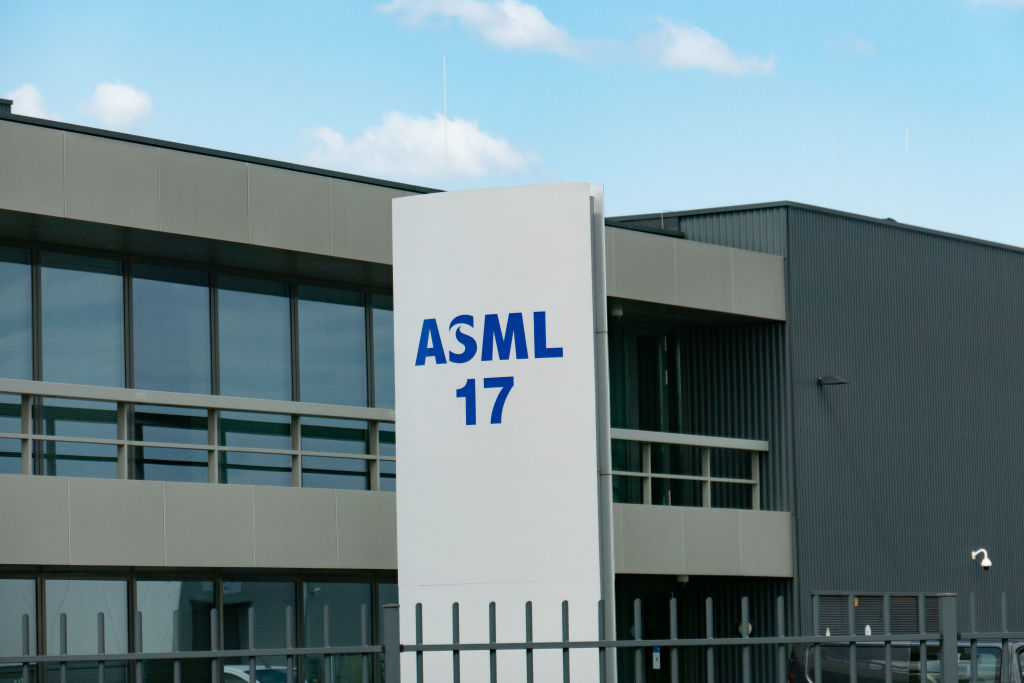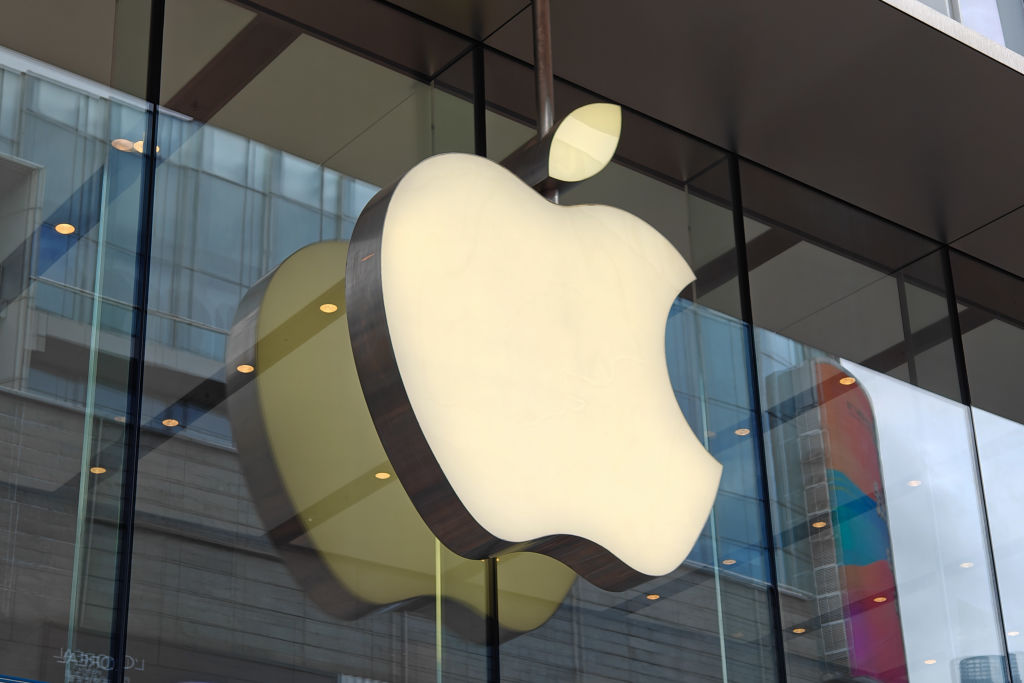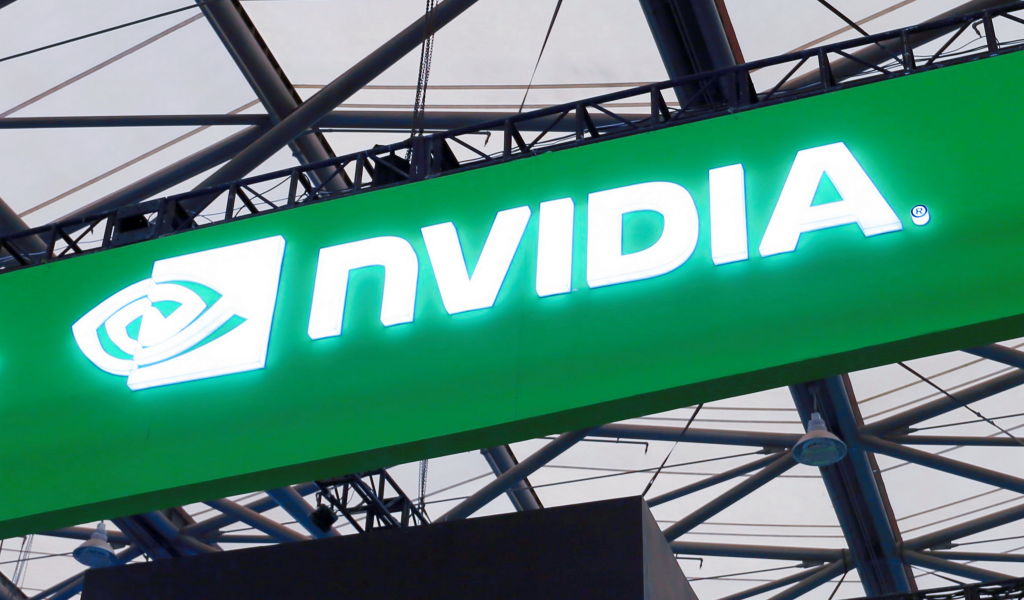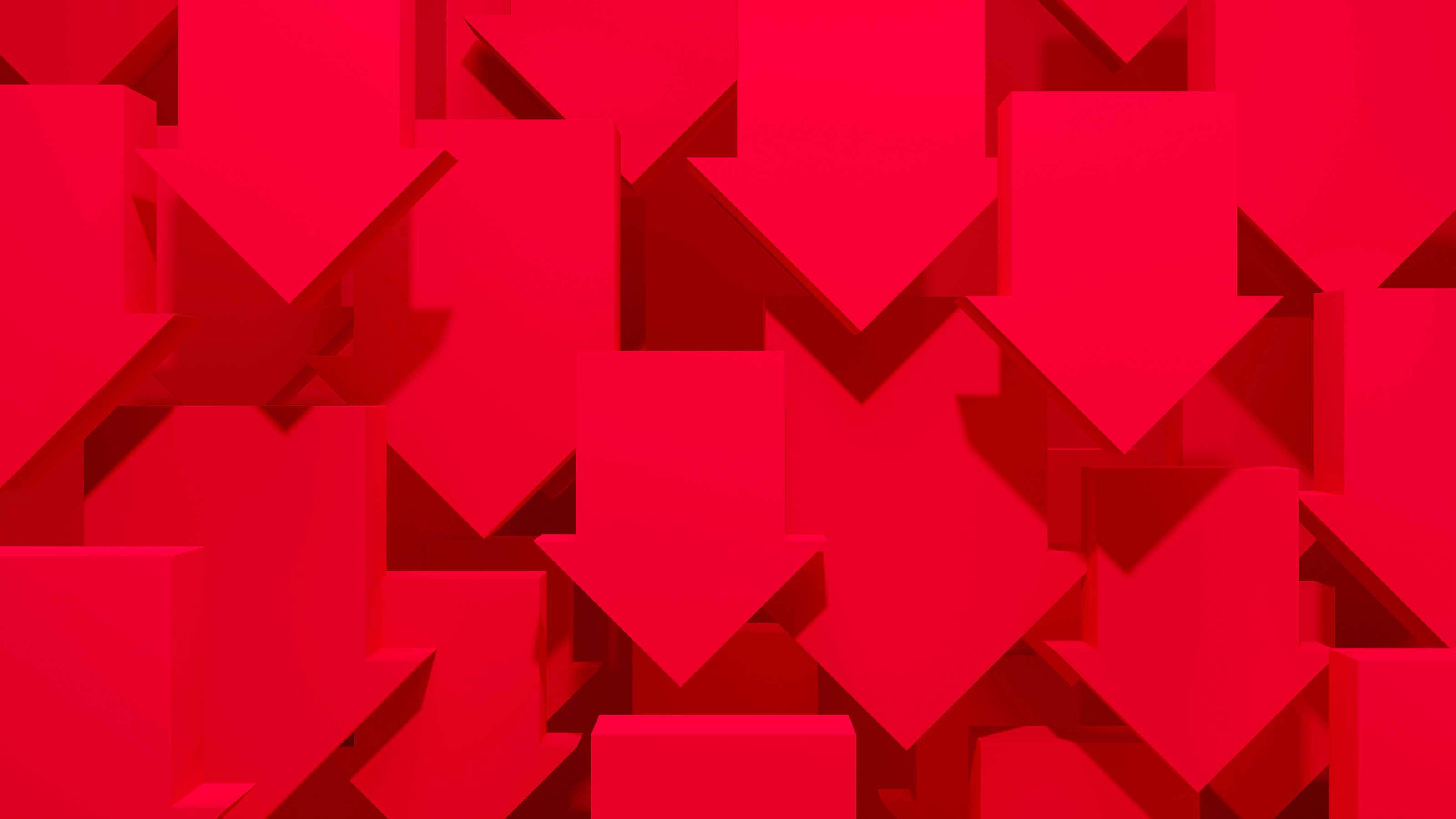5 Monopoly Stocks At the Top of Their Game
The best monopoly stocks dominate their respective industries and create solid long-term opportunities for investors.


Monopolies in the commonly accepted definition of the word are rare these days compared to their presence during the 19th and 20th centuries. First, industries are more complex. Second, the Federal Trade Commission (FTC), formed in 1914, has more teeth, though it has suffered some high-profile losses of late such as with the Microsoft (MSFT)/Activision Blizzard (ATVI) merger. Third, global trade adds more competition.
Still, companies can dominate their niches – and, if they're publicly traded, create a monopoly stock in return. When this happens, investors looking for the best stocks to buy should pay close attention for long-term opportunities. These firms can use their dominance in ways to grow earnings and revenues in ways that lesser players cannot. Witness Apple (AAPL) and its highly profitable services business that other hardware manufacturers cannot replicate.
And despite the rarity of true monopolies, they still exist. ASML Holding (ASML), which makes EUV (extreme ultraviolet lithography) semiconductor equipment, has an estimated 90% share. While others are spending to get a foothold in the market, ASML spent $3.2 billion last year to protect its flank.
Monopoly or dominant positions are not unassailable. See Blockbuster, Toys R Us, Borders and The Sports Authority. However, any list of monopoly stocks is worth evaluating.
From an investor perspective, falling from the lead, though a palpable risk, is much less common than the companies that have outright failed trying to get there. The five monopoly stocks featured here, offer a look at some companies at the top of their game.
Data is as of August 30. Dividend yields are calculated by annualizing the most recent payout and dividing by the share price.

Fortinet
- Market value: $48.1 billion
- Dividend yield: N/A
Fortinet (FTNT, $61.22) shares were knocked off their pedestal in early August with an otherwise solid earnings report that missed the revenue forecast. The company also lowered its 2023 revenue guidance to $5.35 billion from the prior guidance of $5.45 billion. This seeming perfidy should not influence how investors think about the cybersecurity stock.
As for why FTNT is on this list of the best monopoly stocks: The company accounts for 50% of all firewall shipments, according to research company IDC. That's a dominant position, to be sure, but that segment represents about 20% of its business according to its investor relations department. Still, it's important in much the same way that Apple's services business, which also represents about 20% of its sales, grows inexorably as its user base grows.
In this case, FTNT believes that an effort by companies to reduce the number of vendors they rely on and growing IT spending will drive growth. But another important driver is the economies of on-premise computing, especially for emerging artificial intelligence (AI) applications that rely on firewall hardware and services.
Another reason to like Fortinet is an exceptionally strong balance sheet. Until recently, the company had no debt, but did take on $1 billion in 2021, largely it seems because it could, and because the average interest rate was a paltry 1.1%. Last year, the company threw off $1.7 billion in cash from operations, against which there are de minimis capital expenditures.
This leaves plenty of room for stock buybacks (approximately $2 billion in 2022), and in February 2023, FTNT's board of directors authorized a one-year extension to its share repurchase program. I April, it increased the amount available to buy back stock by $1 billion. As of Aug. 3, roughly $2.0 billion remained available for future share repurchases.
This ample amount of cash also leaves room to fund a hefty research and development (R&D) budget, which was $512 million in 2022, and has remained steady at about 12% of revenue for the last three years.
The investment has paid off. Sales and earnings per share grew 32% and 45%, respectively, last year. For the first six months of 2023, the growth keeps on rolling.
Wherever there is a network, whether in the cloud or on-site, there will be bad actors trying to compromise it. Ultimately, this is the strongest driver of Fortinet's business.

Lamb Weston
- Market value: $14.2 billion
- Dividend yield: 1.2%
The global estimates for the French fry market converge on $15 billion, and Lamb Weston (LW, $97.60), with its most recent annual sales at $5.3 billion, would seem to own about a third of the market.
McCain Foods, another big player, is private. Food giant Conagra (CAG), from which Lamb Weston was spun off in 2016 doesn't even mention the word potato in its 10-K report. Several European companies compete, but they appear to be much smaller. Lamb Weston enjoys a dominant position in the most niche of markets.
This is a good position to have in a market that is expanding at about 5% annually. It's not exciting, but long term, it can work for investors. It's already been exciting over the past year or so, with the share price doubling. Since the spinoff, the stock has tripled and paid a growing dividend along the way.
The most recent annual report looks stellar, with sales growing 31% year-over-year to more than $5.3 billion, and earnings per share up fivefold. However, a good chunk of the growth came from consolidating the portions of European and U.S. joint ventures that it did not already own and booking unrealized gains. Backing these out, however, LW still generated an admirable performance by growing adjusted earnings per share to $4.68, or nearly 144%.
The outlook for fiscal 2024, which began in June, is more muted. LW expects full-year earnings per share of $4.95 to $5.40, or about 15% at the top of the range. Notably, though, LW has had positive earnings surprises during the last four quarters.
Still, there are potential headwinds for this monopoly stock. The price increases that fueled the top line as the company imposed to counter rising inflation are less tenable. Retail and wholesale prices tend to be stickier on the way up than on the way down, but should inflation continue to cool, the party is likely to end.
Further, there is some sentiment that the stock is pricey. The midpoint of its earnings guidance – $5.18 – is about 19 times LW's price, which is bumping up against the S&P 500 forward price-earnings ratio of 21. Further gains in the stock will make it expensive, technically speaking.
Still, a dominant position in a steady, growing market, with a spectacularly growing dividend, is a good proposition, and dips might present opportunities.

ASML Holding
- Market value: $263.4 billion
- Dividend yield: 1.2%
ASML Holding (ASML, $669.56) dominates the world of semiconductor manufacturing equipment and at the same time, it doesn't. The company has a small share of the global semiconductor manufacturing equipment. However, it has the lion's share of so-called EUV semiconductor manufacturing equipment, which uses 13.5 nanometer wavelengths to produce chips with as little as 3 nanometers between transistors. A nanometer is one-billionth of a meter.
Without the chips ASML equipment makes, Apple could not make iPhones. And with new demand anticipated for accelerator graphics processing chips to fuel AI applications, speculation is high that the company can maintain its monopoly stock status in an accelerating market.
With nearly $8 billion in EUV sales and global market estimates of $9 billion, ASML owns about 90% of the market.
Dominance is not the only ingredient required to maintain, well, dominance. Remember Sears? Facile management, marketing, financial strength and performance play a critical role.
In terms of performance, ASML's results have been unimpeachable. For the five years ending 2022, the company grew revenues approximately 19% on average annually, from $9.8 billion to just over $23 billion. Over the same period, net income per share grew from $5.27 to $15.54, or about 24% annually.
All this was before the specter of AI. Analysts are now bullish, forecasting sales and earnings per share of $29.7 billion and $21.29, respectively, for 2023, both estimates above historical year-over-year growth rates.
But change is expensive, and prudent investors might evaluate whether or not ASML has the financial chops to weather the changes brought on by AI and electric vehicles and 5G and any other world-changing initials.
The short answer is yes, ASML is financially strong. Here are some of the signposts. The company is unlevered, with shareholder equity more than twice its long-term debt. The current portion of long-term debt, $560 million, is just a fraction of the $8 billion of cash on hand. Debt levels and liquidity are important because as the company maneuvers to capitalize on changes in the chip market, it's not hamstrung by fixed interest payments, or loan covenants that could restrict its flexibility.
Cash from operations, about $8.5 billion, easily funds ASML's capital expenditures of $1.4 billion. However, the company has a strong commitment to research and development – and investors should appreciate this. In 2022, it spent $3.2 billion on R&D, up more than $1 billion from 2020. Moreover, the company disclosed that it anticipates ramping up R&D to almost $5 billion by 2025.
While capital expenditures and R&D are comfortably covered by cash flow from operations, things do get tight. Specifically, add to these uses of cash $2.7 billion in dividends and $7.3 billion in stock buybacks in 2022. And this is again why the company's modest borrowing matters. ASML has access to debt capital for continued R&D, capital spending, share repurchases and dividend payments should market conditions or its financial performance deteriorate.
While all of this is going on, the semiconductor stock yields about $7.44 in dividends or just over 1%. While the yield is meh, ASML is a dividend grower, increasing its payout an average of 33% annually since 2017. Notably, ASML is a Dutch company so those dividends get taxed, likely at 15%, right off the top. Also, as its financial performance is reported in euros, the dollar figures here were all converted at a rate of $1.10 to the euro.

Apple
- Market value: $2.93 trillion
- Dividend yield: 0.5%
Apple's (AAPL, $187.65) iPhone is the heavyweight in the smartphone market. In the U.S., Apple accounted for more than half (55%) of smartphone shipments in the second quarter of 2023, and 17% of smartphone shipments worldwide, according to data from Counterpoint Research.
While Apple is only second to Samsung in global smartphone shipments, the iPhone's premium pricing and high profit margin are where it takes the cake. In the first quarter of 2023, Apple claimed 50% of global smartphone revenues and more than 80% share of global smartphone operating profits.
The question for investors is what this monopoly stock is doing with its dominance to drive growth and increase shareholder value for the long term. In this regard, many investors zero in on the company's service revenue. That's what Apple earns from selling everything from television subscriptions to cloud storage.
Services growth is not dramatic, but it's steady and highly profitable. Last year, it was nearly $78 billion, or about 20% of total sales. In 2017, services sales were about $30 billion and about 13% of total sales.
But services are much more profitable. The gross margin on products (sales minus the cost of sales) was about 36% last year. The gross margin on services was 72%, a neat double over the product margin. This means that every dollar in gross profit Apple earns in its services business is the equivalent of $2 in product sales.
But the importance of this feature of Apple's goes beyond dollars and cents. It makes the Apple ecosystem sticky and difficult (some would say impossible) to leave. This all but ensures growth in its highly profitable services business. Further, each new dollar Apple earns in product sales guarantees downstream service sales at twice the margin.
So while product sales vary, and Apple shares vary with it, services may prove to be the great stabilizer long term. And for long-term investors, don't forget that AAPL is a dividend growth stock. In May, Apple raised its quarterly dividend for the 11th year in a row and announced that its board of directors authorized repurchasing up to $90 billion of the company's stock.

Nvidia
- Market value: $1.21 trillion
- Dividend yield: 0.03%
The AI boom has catapulted Nvidia (NVDA, $492.64) to the top. With a whopping 240% jump in its share price year-to-date, NVDA has become the first semiconductor company to reach a valuation of a trillion dollars. The company's early lead in AI made it essentially a monopoly in the AI computing space, with a reported market share of as high as 95%.
NVDA's position as a leader in AI is part of the company's long-term plan, investing in chips that can handle artificial intelligence applications as far back as a decade ago.
And with the launch of OpenAI's ChatGPT, a large language model-based chatbot which runs on tens of thousands of Nvidia's graphics processing units (GPUs), the demand for the company's data center products that are capable of supporting AI workloads is skyrocketing. In fact, its data center division generated 76% of NVDA's revenue in the second quarter of fiscal 2024, up from 25% in the second quarter of fiscal 2020.
Meanwhile, its gaming division revenue which used to be the company's strongest growth driver, accounted for 18% of total revenue in the second quarter of fiscal 2024, down from 51% in the second quarter of fiscal 2020.
Looking at the details of its most recent earnings report, NVDA had a record data center revenue of $10.3 billion, up 141% quarter-over-quarter and 171% from a year ago. The company attributed this jump to the growing demand for generative AI and large language models using GPUs from large consumer internet companies and cloud service providers.
NVDA's automotive revenue came in at $253 million (2% of total revenue), up 15% from a year ago, driven by the growth in sales of self-driving platforms and AI cockpit solutions.
The company reported diluted earnings per share of 82 cents, a healthy increase of 28% year-over-year and 44% quarter-over-quarter, and gave revenue guidance of $16 billion for the third quarter, up from $13.51 billion recorded in the second quarter.
At about $500 per share, is NVDA worth considering now? It's easy to say, and imagine, there remains much more untapped potential. However, with a price-earnings ratio of 118, maybe all this potential is already priced in.
There is a case to be made that it can't yet be accurately baked in. The recent AI craze is mostly due to one type of AI, and that's generative AI. This relatively new technology has the potential to expand, and it is likely that other artificial intelligence-related user markets will emerge in the coming years/decades.
Still, NVDA is not immune to macroeconomic challenges. One such glitch is the Biden administration's push to restrict China's access to AI via cloud computing. Bearishness in the broad market could also return unexpectedly, especially due to the uncertainty surrounding the Fed's fight against inflation and whether or not it will continue to raise interest rates.
Getting behind the leader in the early stages of a new technology has its merits, but is speculative. Remember, during the 12 months following October 2007, shares declined to less than $2 from about $9. And from August 2018 through December of that year, NVDA shares fell to $32 from $70. More recently, from the fall of 2021 to the fall of 2022, shares dropped to $114 from $329. Investors who take the plunge with this monopoly stock should be ready to hold on for a wild ride.
Related content
Get Kiplinger Today newsletter — free
Profit and prosper with the best of Kiplinger's advice on investing, taxes, retirement, personal finance and much more. Delivered daily. Enter your email in the box and click Sign Me Up.

-
 This One Area of Americans' Retirement Readiness Gets a Bad Grade
This One Area of Americans' Retirement Readiness Gets a Bad GradeMillions of Americans score poorly on retirement readiness due to this Achilles' heel. Are you prepared?
By Christy Bieber Published
-
 REAL ID Deadline: What You Need by May 7, 2025
REAL ID Deadline: What You Need by May 7, 2025Worried about needing a REAL ID soon? Learn more about the requirement, how to get your ID and valid REAL ID alternatives.
By Laura Gariepy Published
-
 Stock Market Today: Dow Drops Another 2,231 Points to Hit a Correction
Stock Market Today: Dow Drops Another 2,231 Points to Hit a CorrectionThe Nasdaq Composite, meanwhile, entered a new bear market with its latest slide.
By Karee Venema Published
-
 Stock Market Today: Dow Dives 1,679 Points on Trump Tariff Shock
Stock Market Today: Dow Dives 1,679 Points on Trump Tariff ShockU.S. stocks lost roughly $3.1 trillion in market cap on Thursday – the biggest one-day decline since the start of the COVID-19 pandemic in March 2020.
By Karee Venema Published
-
 Wall Street Is Worried About Apple Stock. Should You Be Too?
Wall Street Is Worried About Apple Stock. Should You Be Too?Analysts expect Trump's sweeping tariffs to have an outsized impact on Apple stock. How concerned should investors be?
By Karee Venema Last updated
-
 The Stock Market Is Selling Off. Here's What Investors Should Do
The Stock Market Is Selling Off. Here's What Investors Should DoInvestors started fleeing the equities market en masse in response to the Trump administration's "jaw-dropping" tariffs. But the experts say don't panic.
By Karee Venema Last updated
-
 Stock Market Today: It's the Old Up-Down Again on Liberation Day
Stock Market Today: It's the Old Up-Down Again on Liberation DayMarkets look forward to what comes with the reordering of 80-year-old global trade relationships.
By David Dittman Published
-
 Stock Market Today: Dow Rises 854 Points From Its Intraday Low
Stock Market Today: Dow Rises 854 Points From Its Intraday LowIf there's one thing markets hate, it's uncertainty. But uncertainty is all they're getting these days.
By David Dittman Published
-
 Stock Market Today: Auto Tariffs Send Stocks Lower
Stock Market Today: Auto Tariffs Send Stocks LowerThe main indexes snapped their win streaks after the White House confirmed President Trump will talk about auto tariffs after the close.
By Karee Venema Published
-
 Stock Market Today: Markets Celebrate Trump's Tariff Détente
Stock Market Today: Markets Celebrate Trump's Tariff DétenteConsumer discretionary stocks led 10 of the 11 S&P 500 sector groups well into the green.
By David Dittman Published
